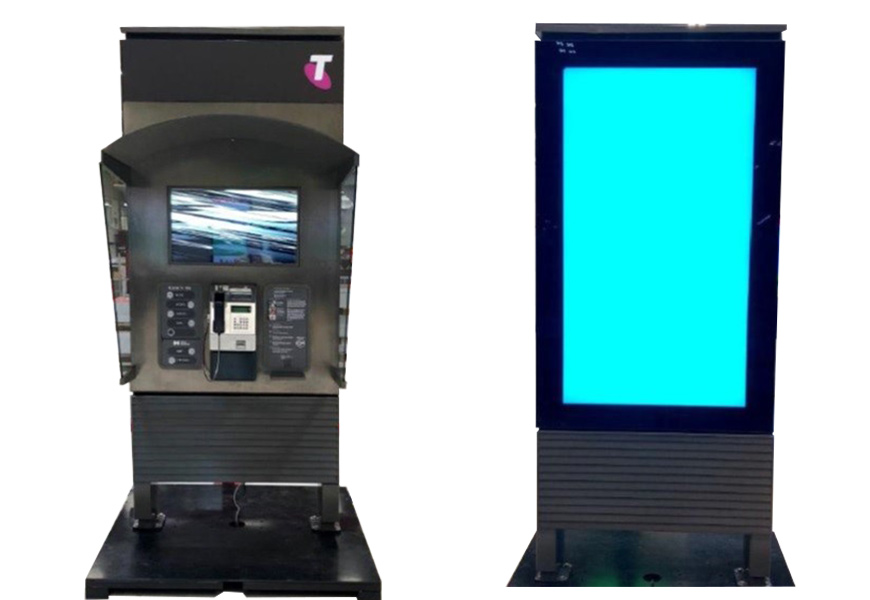
High Court hangs up on Telstra claims that next-gen payphones are exempt from state planning laws

The High Court has put an end to Telstra’s long-running claim that installation of its next-generation payphone cabinets does not require planning permission, denying the telco special leave to appeal a November 2020 decision of the Full Federal Court.
The Full Federal Court had ruled that Telstra‘s intention to display commercial advertising on the payphone cabinets meant that the Cabinets were not "low-impact" facilities under the Telecommunications Act 1997 (Cth) and the exemption from State and Territory town planning laws available for low-impact facilities did not apply.
In a brief recent decision refusing Telstra special leave to appeal that decision, Justices Gaegler and Steward stated that Telstra "lacked sufficient prospects of success to warrant granting leave" (Telstra Corporation Limited v Brisbane City Council & Ors; Telstra Corporation Limited v Melbourne City Council & Ors [2021] HCASL 82).
This leaves undisturbed the Full Federal Court’s guidance for carriers and planning authorities about the proper interpretation of the Telecommunications (Low-impact Facilities) Determination 2018. The key takeaways from that decision were:
- where equipment is required (for the purposes of it being a low-impact facility) to be "used", "designed", or "fitted" in a particular way, this should be read as referring to use at installation or any time thereafter, so the relevant provision should be: "used or to be used…", "designed or to be designed…"or "fitted or to be fitted" (or the negative if the case may be);
- in considering whether equipment is to be used, designed or fitted in a particular way, it is relevant to consider the physical features and technical capability of the proposed equipment and the intended use of the equipment by the entity wishing to install and use it; and
- whether a carrier intends to use equipment in a particular way is a question of fact.
Not your ordinary payphones
This litigation involved the application of the powerful (but infrequently litigated) exemption from State and Territory planning laws available to licensed carriers under Schedule 3 to the Act. There is a substantial benefit for carriers in avoiding the usual State and Territory planning controls applying to use and development of land. The key constraint on this carrier power is that the exemption only applies to low-impact facilities, as described in the Determination.
Melbourne City Council's (MCC) refusal in March 2019 of 81 planning permit applications seeking authorisation to display commercial advertising on the Cabinets proposed to be installed within Melbourne’s CBD triggered the litigation.
Telstra was successful at first instance in the Federal Court and, on appeal to the Full Federal Court, MCC (joined as respondents with Brisbane City Council and Sydney City Council) was successful (Telstra Corporation Limited v Melbourne City Council [2020] FCA 305; Melbourne City Council v Telstra Corporation Limited [2020] FCAFC 200).

The proposed Cabinets
At the heart of the dispute was whether the Cabinets fell foul of the requirement in the Determination that a public payphone cabinet or booth was a low-impact facility only where it is "not used to display commercial advertising other than advertising related to the supply of standard telephone services".
Telstra argued that while the Cabinets were capable of displaying commercial advertising, they would only be used to display advertising relating to a standard telephone service until a relevant planning authority granted a permit authorising broader commercial advertising. As such, the Cabinets could be installed as a low-impact facility without requiring a permit.
Had it been successful, this argument would have had the additional practical advantage of avoiding a permit trigger for the more contentious activity of installing the 3m tall x 1m wide Cabinets, and only engaging with the permit approval process for the comparatively less intrusive activity of displaying commercial advertising on an existing digital display screen.
The Councils argued that the Determination should not allow a carrier to benefit from the exemption from planning laws available for installation of a low-impact facility, while at the same time contemplating a future use of that facility that would mean it is no longer a low-impact facility. They argued that there was clear evidence that Telstra intended to use the Cabinets to display commercial advertising once installed.
The Councils also argued that when assessing whether a proposed facility is a low-impact facility, it is necessary to consider the design of the facility, the intention of the installer as to future use, and the steps taken by the installer in aid of that use. The Full Federal Court agreed that the Cabinets were designed to display commercial advertising, and Telstra had taken significant steps prior to the proposed installation to enable that use.
This litigation has assisted industry participants to interpret the Determination not only as it relates to the Cabinets, but also more broadly in respect of requirements about use and design of low-impact facilities. The drafting in the Determination remains inconsistent in places, and there can be significant complexity in applying the "low-impact facility" and exemption provisions.
The Commonwealth Government is currently considering further amendments to carrier powers and immunities framework. While changes to the Determination are proposed, these do not include any amendment to Cabinet provisions and it is not clear how the Determination might be further amended (if at all) in response to the Full Federal Court’s Decision.
Clayton Utz has significant expertise in this area and regularly advises carriers, landowners, planning authorities, and other clients in relation to telecommunications law. Please contact Damien Gardiner or Rob Stilling if you have any queries.
Get in touch
